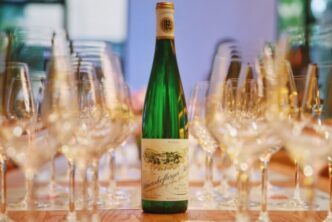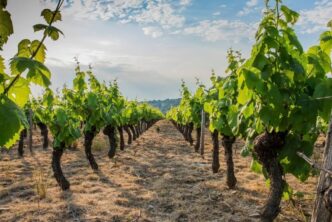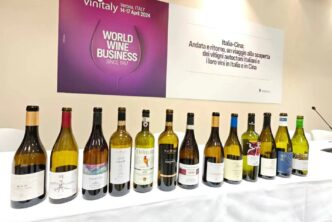Fewer words in wine today get thrown around more easily than ‘terroir’: perhaps only ‘minerality’ out-dukes it for top spot in the jargon used at wine shows and tastings all over the world. It’s gotten to the point these days where it’s not safe to leave the house without running the risk of knocking into somebody spouting off something about “terroir”. Nowadays, you are just as likely to hear of terroir in elevators, on the street, and at any country fair with hot dog champion eating contests, ride the pigs and trying to sink someone in a tub of water by hitting a bullseye from afar is but one of the many high points. But the question is, does the word “terroir” really mean something when it is being used? And does it have the same meaning for all involved? For in the end, if it means apples to one person and oranges to the next, then it is safe to say that “terroir” may not be as useful a concept as it could and perhaps should be.
In fact, terroir is a fantastic concept, one that has many merits. It deserves to be understood at its fullest, and to be employed properly. However, nowadays the term is often used too broadly and generically, when not downright incorrectly: even worse, it gets bandied about when trying to justify why a wine tastes nothing like it should. In other words, not like the grape variety that wine is supposedly made with, and not of the place it is supposedly made from. But that implies the person doing the talking actually knows what the wine made with a specific grape should taste like, and what wines from a specific site should also taste like. But more often than not, the person just doesn’t know what to say, and so leaves it at a very easy “…it’s because of the terroir”.
Years ago, I was at an important wine show in NYC and as I had forty minutes to kill before going to lead my own masterclass, decided to step into another masterclass on white wines from all over the world. The first two wines were labelled Italian “Greco” wines, one from Campania and one from Calabria. They were both delicious and lovely to drink, but were obviously very different wines. The tasting went well, with two very good, engaging and knowledgeable speakers; and as my own masterclass was delayed by thirty minutes or so, I was able to sit through all of it. Honestly, I greatly enjoyed tasting Loureiro wines from little-known producers, Hunter Valley Semillons and South African Chenin Blancs. I had fun, which is what wine should be at least partly about. But if and when you are a public speaker and a supposed expert on the subject, then it should also be about knowledge, and telling people things the way they really are. At the tasting’s end, during the question period, a fellow gets up and asks the two speakers: “Hey, I loved the first two wines that I had never tried before: but even though I see they are both Grecos, why are they are so different?”. The two speakers looked at each other obviously not knowing what to say. After a moment of embarrassed silence, one of the two musters the legendary words: “Well, it’s really all due to their different terroirs”. Which to be fair, was actually a partly correct answer, if the person uttering those words knew that the specific grape variety used to make a wine is an integral part of that wine’s terroir. In this case, it was exactly so: Campania Greco wines are made with the Greco variety, while those of Calabria are made with the Greco Bianco variety. The latter is a distinct wine grape from the former and the two have very little in common. The wines of each also taste completely different, as this tasting had brought to the fore very effectively. So, given that grape varieties characterize a specific terroir as much if not more than any other single factor, then yes, the wines differed so much because of their terroirs. But it would have been much easier, and probably much more useful for everybody listening, to tell the person that they differed because of the two very different grape varieties used to make them, much like a Pinot Blanc wine is different from a Pinot Gris wine and a Cabernet Sauvignon wine is recognizably different from a Cabernet Franc wine.
Problem is, the concept of terroir means different things to different people. Or rather, it is used in different ways by different people: but I trust you’ll agree with me that this is a slippery slope for wine to find itself on. Ignorance is always a problem: it keeps us in the dark, and leaves us open to potential dishonesty. Once again, part of the problem might just be that everyone uses the word “terroir” in his or her own way, but not knowing exactly what “terroir” means, leaves us vulnerable, open to listening to and potentially believing what people with an agenda might find it convenient to convey. When a producer making a black as ink, peppery Brunello wine, which is supposedly made with 100% Sangiovese, tells you the wine is so because of “its terroir”, you know that person either doesn’t know what he or she is talking about or is just not being straightforward with you.
So how do we go about defining terroir easily in such a way that everyone can understand what it really means as applied to wine? An outstanding, erudite definition of terroir is the one offered by Séguin (1986): “Quality terroirs are those in which the habitat permits complete but slow maturation of grapes with product regularity from vintage to vintage”. Another excellent, easy to remember and to understand definition that is worth knowing is that of Pratts (2003): “terroir is all the natural characteristics influencing wine biology and composition of the grape”. So now we need to identify and commit to memory what those “natural characteristics” are, such that we have a definition of terroir we can all work with.
Simply put then, terroir is the result of a combination of physical and human factors that determine what a wine from a specific place will taste like. The many physical and environmental variables of terroir (physical -environmental- factors) determine a wine’s quality just like the actions of human beings (human factors), who intervene over time modifying the grape’s environment continuously throughout centuries in an effort to make better wine (and usually more of it too). So by “physical factors” we mean the complete natural environment in which the wine is produced, including the soil, climate, topography, and altitude: clearly, those all end up acting as determinants of viticultural practices, such as grape variety selection. The human factors include the choice of cultivar; the selective breeding of plants; altering the physical conditions in negative and/or positive ways (pesticides, intensive agriculture, indiscriminate use of fertilizers versus the use of organic and biodynamic methods of viticulture); use of different viticultural and winemaking practices and techniques (grape variety, rootstock, age of vines, yield, trellissing systems, plant density); and more still.
Of all those factors, the single most important thing about the concept of terroir is to grasp that there cannot be terroir without grape variety, and vice versa: one cannot exist without the other. . Which ought to be easy enough to understand, given that throughout history, specific terroirs have always been associated with specific grapes. I’m not talking about a single vineyard area in which Pinot Noir might do especially well even though the whole area at large has always been planted to say Cabernet Sauvignon. Though such examples are rarer than rare, exceptions do exist and so fine; but those are exactly just that, exceptions. They are not the norm, and have never been the norm. The point is that everywhere in the world, the most famous wine regions have always been associated with one major grape variety, and a bunch of complementary ones. It has always been so in France, Italy, Spain and Germany for example. The modern-day tendency to speak of a wine region and say that it produces wines made from the likes of Syrah, Cabernet Sauvignon, and Pinot Noir that are all similarly excellent is wishful thinking at best. More pertinently, it is not an observation or statement born from an analysis of history and the facts before us. Rather simply, it is more that viticulture and winemaking have improved to a degree that we can now make very good wines just about anywhere; climate change has probably helped too, with some previously marginal environments for some grape varieties now allowing their cultivation in places where they never fared well before.
But true terroir wines of the utmost quality are possible only in finite, specific places devoted to one specific grape variety, and it has always been so. After all, for the most part, you don’t see anything but Chardonnay planted in Montrachet, correct? And there’s Riesling and nothing else in the Bernkastel Doktor, right? And it’s mostly only Nebbiolo in Cannubi, correct? Think about it for a moment, and ask why yourself that is. And you’ll find you have a much better understanding of what terroir is really all about.
Need more examples to be convinced? Fine. In Burgundy, hallowed sites like Musigny, Chambertin, and Richebourg, all named grand crus, are planted only to Pinot Noir. In Barolo, we have the likes of Cannubi, Brunate, and Vignarionda. In the Mosel, we have the Urziger Wurzgarten, the Bernkasteler Lay, and the Zeltinger Sonnenühr, famous sites where Riesling is de rigueur. Over in the Pfallz, it is the Forster Jesuintengarten and the Forster Kirchenstück; and in Niagara there’s different officially recognized subareas such as the Lincoln Lakeshore, the Beamsville Bench, the St. David’s bench and others still, each mostly associated, to varying degrees, with a specific grape variety. Many of those famous sites make wine lovers and collectors swoon just at hearing their names, never mind tasting the usually amazing wines made from each. There’s a reason for that.
So here’s the kicker: all of those places I just mentioned, every single one, is mostly associated with one specific grape variety. Think about it. What grape is used to make all red Burgundy wines, and what is planted in the aforementioned grand crus Musigny, Chambertin, and Richebourg? Pinot Noir, and Pinot Noir only. No Cabernet Sauvignon, no Durif, no Tempranillo…. just Pinot Noir, and Pinot Noir only. And what about Barolo and Barbaresco? Nebbiolo rules: and it is the only grape variety allowed by law with which you can make Barolo and Barbaresco. Over in the Mosel, it has always been mostly about Riesling (though in more modern times that has changed somewhat). And even in those wine production areas that have long been associated with blends, such as the Bordeaux banks, one grape variety has always clearly dominated (Bordeaux’s rive droite is the kingdom of Merlot, while the rive gauche is the realm of Cabernet Sauvignon). And even in those wine regions where a number of different grapes are grown, such as in Canada’s beautiful Niagara region, grape varieties are planted in specific pockets of the region only. For example, Riesling rules on the Beamsville Bench (it would be a tragedy if it were otherwise); but over in the St. David’s Bench, characterized by a much warmer meso-climate, it’s red grapes such as Cabernet Sauvignon and Merlot that are given a chance to shine. There’s a logic to all that: a terroir-based logic, in fact.
If you can bring yourself to start thinking in similar terms, rather than just generically waving your hand and summarily saying “Well, you know…the wines are different because of the terroir”, you’ll find that the world of wine will not just make more sense to you, but will be a whole lot more interesting and enjoyable too. And to quote Paul McCartney and Wings in their “Silly Love Songs”, what’s wrong with that?

 English
English



